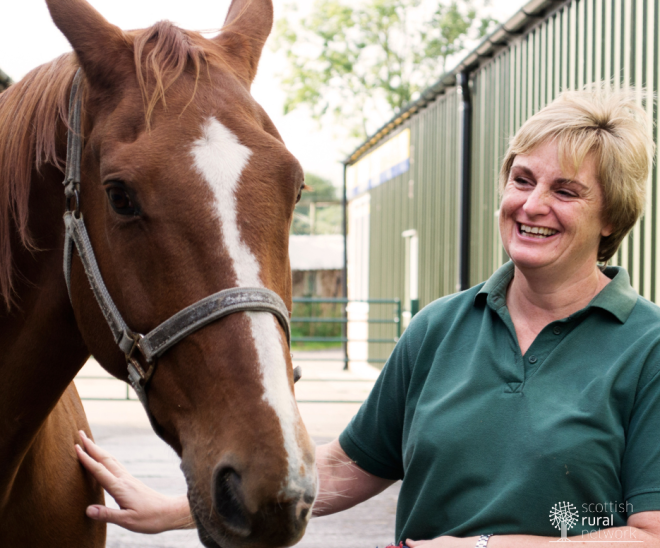Highlands and Islands Veterinary Services Scheme updated

Scottish Government has updated its information about the Highland and Islands Veterinary Services Scheme.
The scheme is funded by the Scottish Government and its aim is to ensure the provision of an adequate veterinary service to prevent and eradicate animal diseases for all animals kept for agricultural purposes and belonging to crofters and others of like economic status, where no other provisions are available on the market.
It is necessary to support large animal veterinary practices, in some remote areas of the Scottish highlands and islands, because without them, crofters and their animals would be completely without practical veterinary cover. It is important to ensure these practices continue to provide cover for remote areas as they play a vital role in prevention and identification of animal disease.
In practical terms, this means that crofters and other eligible persons can arrange a visit by a participating veterinary surgeon for a modest maximum charge. This charge is supplemented by a grant to the veterinary practice which will cover the costs of a visit when vets are called out to take preventative and eradication measures for animal diseases. No overcompensation will be paid and eligible activities will only include those detailed below.
Eligibility for veterinary practices to participate in the scheme
An eligible practice must operate within the designated area of the Scheme and must (but not exclusively) provide services to eligible clients with eligible animals as outlined below. However, an eligible practice does not need to be the client’s sole provider of veterinary care.
Practices wishing to join the scheme must demonstrate that they have operated effectively within the area of the Scheme for a minimum of two years and must provide the following information:
-
number of full time equivalent vets
-
monthly visit and mileage returns for eligible clients for one full financial year
-
brief history of the practice including type of client base and locations covered
All participating practices are required to sign an agreement and comply with its terms.
An eligible client must:
-
live within the geographic confines of the Scheme
-
be a crofter or small farmer of similar economic status or a farm worker of similar economic status employed by a crofter/small farmer
-
have animals that are eligible for veterinary treatment under the Scheme
Eligible animals are:
Livestock or other animals as defined in Annex 1 of the EC Treaty on the Functioning of the European Union kept for agricultural purposes owned or kept by eligible clients. These are:
-
livestock
-
dogs (except where they are kept as pets)
-
horses and ponies
Subsidy control
This scheme is open to small medium enterprises (SMEs) as defined in the UK Companies Act 2006. Funding through HIVSS is subject to the UK Subsidy Control Act 2022, under which the scheme is currently considered a legacy Scheme (Section 48). Visits will be covered when vets are called out to eligible clients to take preventive and eradication measures for eligible animals.
Some practices that are in particularly difficult areas or are particularly small may receive additional payments aimed at helping to ensure the financial viability and functioning of large animal work at the practice itself. The Difficult Area Practice Grant and Locum Grant are provided as Minimum Financial Assistance (MFA) in accordance with sections 36 and 37 of the Subsidy Control Act 2022, subject to MFA terms and conditions being complied with.
Areas covered
The scheme covers the crofting counties designated under the Crofters (Scotland) Act 1993 but not including areas designated on or after the commencement of the Crofting Reform etc. Act 2007; more specifically the "crofting counties" means the former counties of Argyll, Caithness, Inverness, Orkney, Ross and Cromarty, Sutherland and Zetland. The scheme also extends to North West Perthshire and covers the agricultural parishes of Blair Atholl, Fortingall, Moulin, Weem, Logierait, Little Dunkeld and Dowally. View a list of participating practices and the areas they cover can be viewed here:
Contact
For more information please contact:
SG HIVSS Scheme Administrator
Animal Health and Welfare Division
P Spur
Saughton House
Broomhouse Drive
Edinburgh
EH11 3XD
Telephone: 0300 244 6673
Email: HIVSS@gov.scot
Any crofter or small farmer with livestock wishing to participate must have a CPH number. For information on how to obtain a CPH number please contact your local RPID office.
Pic credit: Vet with horse by Mypurgatoryyears (Canva)


